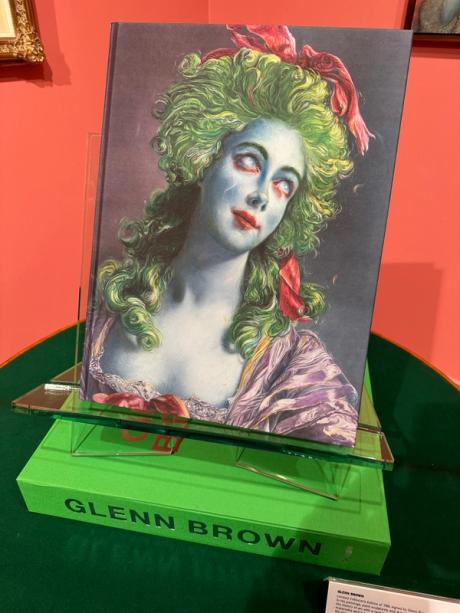Evenings of water and dense forest
2019 - Installation (Installation)
3x (48 x 48 x 10 cm); 2x (130 x 95 cm)
Noara Quintana
The series Belle Époque of the Tropics by Noara Quintana has as its background the history of the rubber industrialization in North of Brazil. The so-called Amazon Rubber Boom, 1879 to 1912, was an important part of the economic and social history of the country and Amazonian regions of neighboring countries, related to the extraction and commercialization of latex. Centered in the Amazon river basin, the boom resulted in a large expansion of European colonization in the area, causing cultural and social transformations that wreaked havoc upon Indigenous societies and immense environmental damage. The burgeoning cities in the region were turned into an emblem of modernity by the local elites who imported social habits and elements alluding to the European Art Nouveau aesthetics and architecture with its sinuous ornaments and organic shapes (in itself the outcome of an exoticization of non-Western cultures). Belem and Manaus were nicknamed as “Paris of the Tropics” and “Paris d’Amerique”, and what was then a motive of pride now is perceived as a somewhat kitschy melancholic heritage. In Evenings of water and dense forest Quintana highlights these histories by creating idiosyncratic objects like the Victoria Regia lamps and painted fabrics that create a sort of a suspended living room. The hanging works are made of natural rubber, silk, graphite, and glowing green lights, almost as if they were from a science fiction movie. The artist explains that the work critically engages with and refigures colonial practices of theft and transportation, of people, resources, histories and culture.
Noara Quintana’s research-based practice focuses on the materiality of everyday objects and their interconnection with sociopolitical and historical processes in the Global South. Her work investigates the genealogy of aesthetic manifestations and architectural elements often underscored by a colonial imaginary and its persisting implications. Quintana’s research-oriented work takes various forms such as installation, sculpture, video, and photography, and explores intersections between nature, geometry, and politics.
Colors:
Related works sharing similar palette
» see more

© » KADIST
Julieta Aranda
2016The video Swimming in rivers of Glue is composed of various images of nature, exploring the themes of exploration of space and its colonization...

© » THEARTNEWSPER
February Book Bag: from to a graphic novel of Ruth Asawa’s life to a tome of Glenn Brown’s works Art market Museums & heritage Exhibitions Books Podcasts Columns Technology Adventures with Van Gogh Search Search Books blog February Book Bag: from to a graphic novel of Ruth Asawa’s life to a tome of Glenn Brown’s works Our round-up of the latest art publications Gareth Harris 6 February 2024 Share Glenn Brown , contributors include Hans Werner Holzwarth, Taschen, 474pp, £750 (hb) This new monograph gives an in-depth overview of the work of the UK artist Glenn Brown, known for his reproductions of other artists’ works—including those byOld Masters, the greats of Modern art and science-fiction illustrators—which he transforms by radically reconfiguring their colour, orientation and size...
Related works found in the same semantic group
» see more

© » KADIST
Clarissa Tossin
2012In Fordlândia Fieldwork (2012), Tossin documents the remains of Henry Ford’s rubber enterprise Fordlândia, built in 1928 in the Brazilian Amazon to export cultivated rubber for the booming automobile industry...

© » KADIST
Khvay Samnang
2014The video Rubber Man continues exploring issues related to land use, also noticeable in his Untitled series (2011)...

© » KADIST
Santiago Yahuarcani
2017The series Castigos del caucho by Santiago Yahuarcani originates in the oral memory transmitted by the artist’s grandfather, who was a survivor of the Putumayo genocide where thousands of Indigenous people were annihilated and enslaved to extract rubber from the Amazon forest between 1879 and 1912...

© » SOUTH CHINA MORNING POST
Giant Rubber Duck artist on why size matters – ‘instead of us looking at it, it is now looking at us’ – and his miniatures on show in Seoul | South China Morning Post Advertisement Advertisement Art + FOLLOW Get more with my NEWS A personalised news feed of stories that matter to you Learn more Dutch artist and “Rubber Duck” creator Florentijn Hofman in Hong Kong in June 23 for the return of his giant inflatable artwork to Victoria Harbour, this time with a twin...


